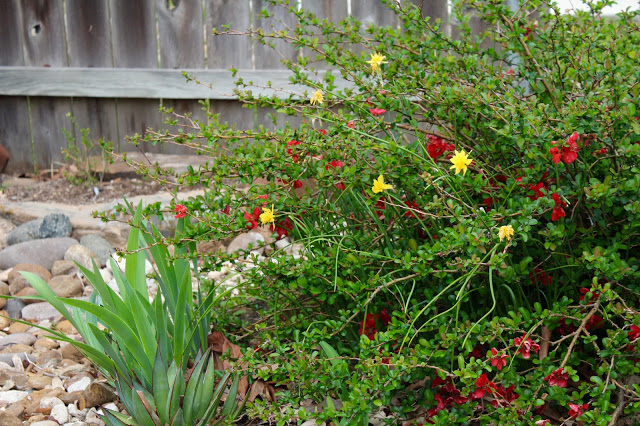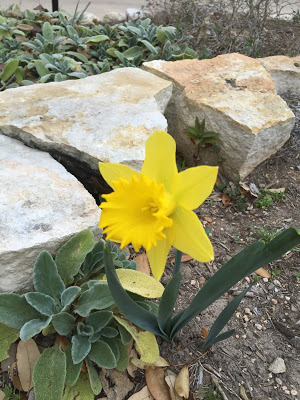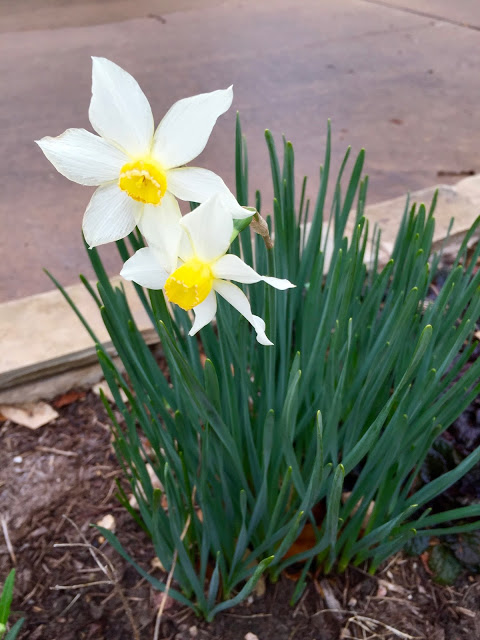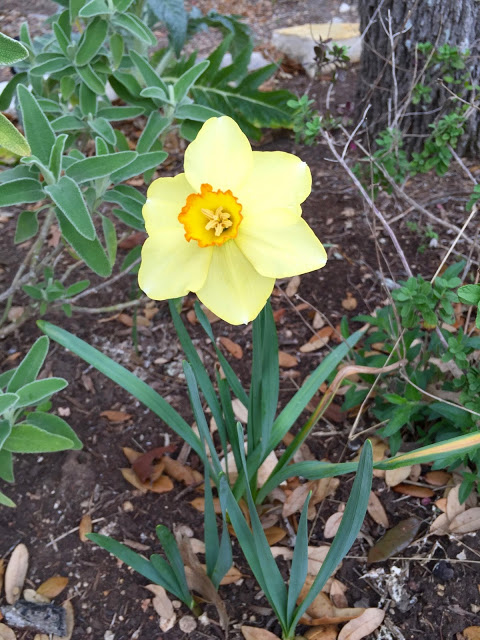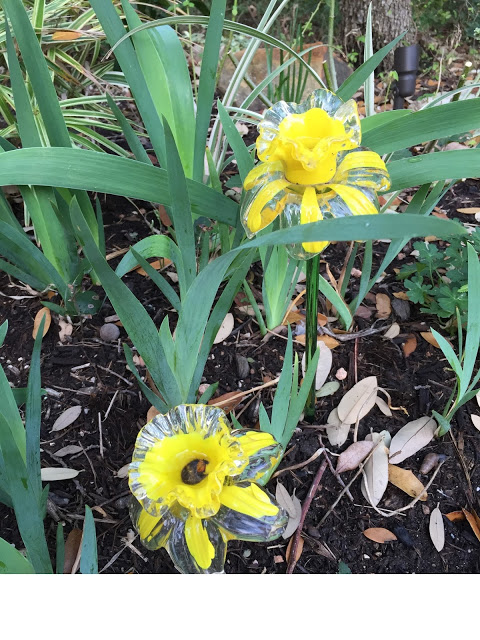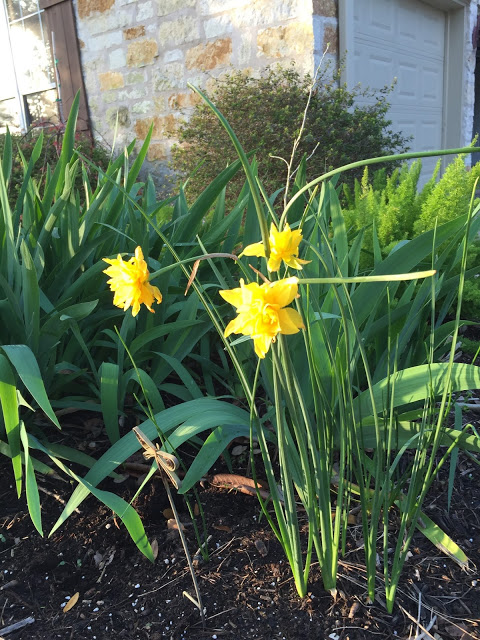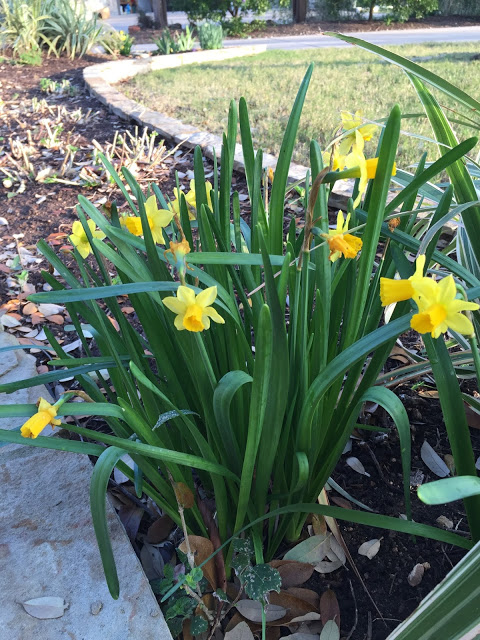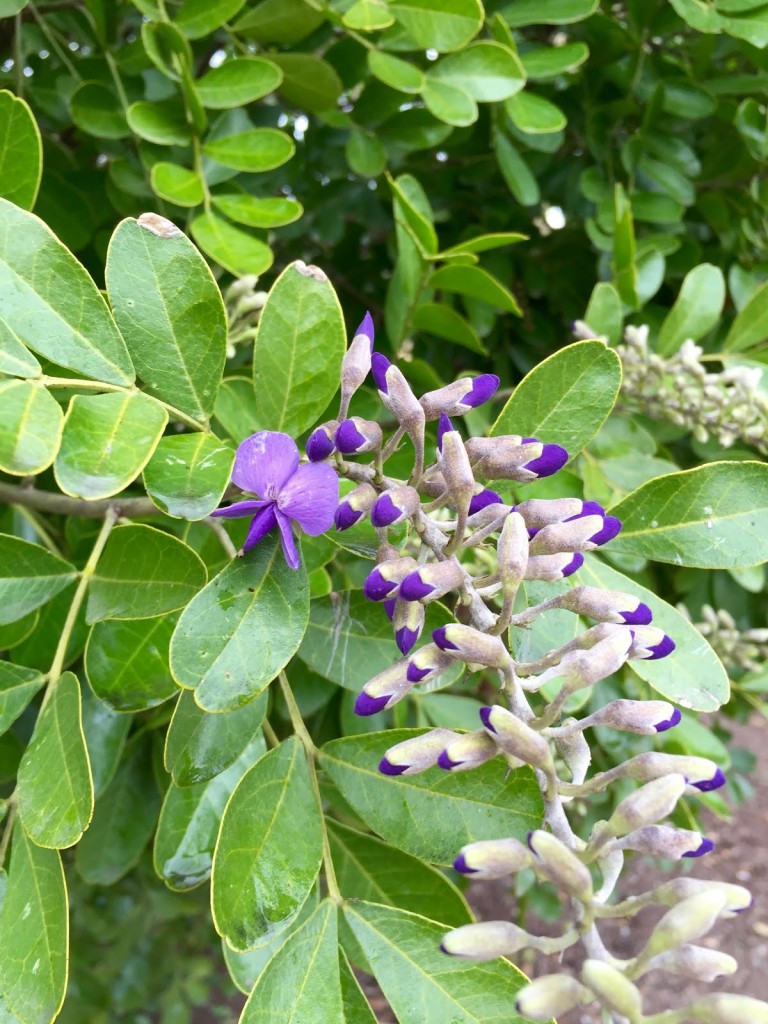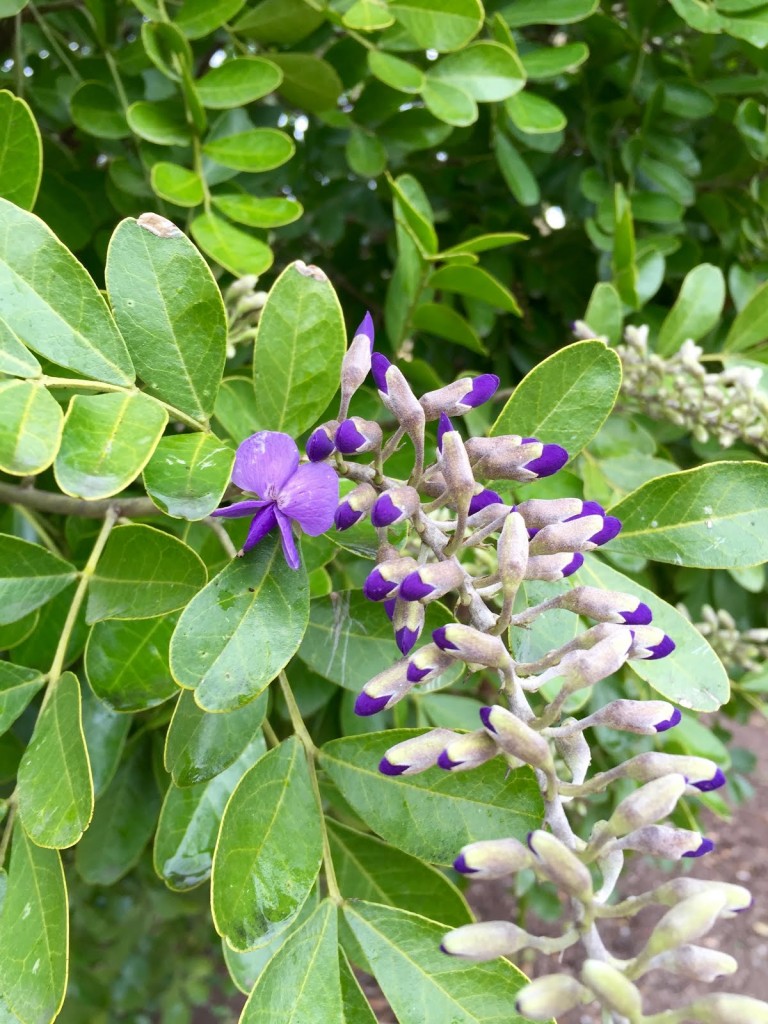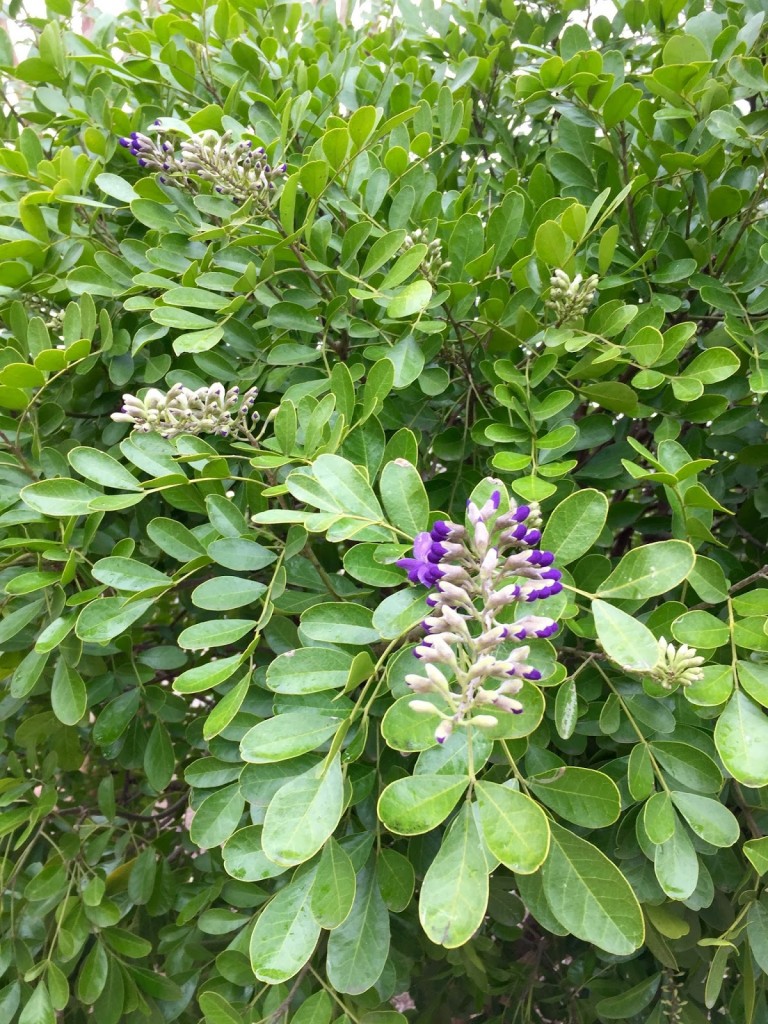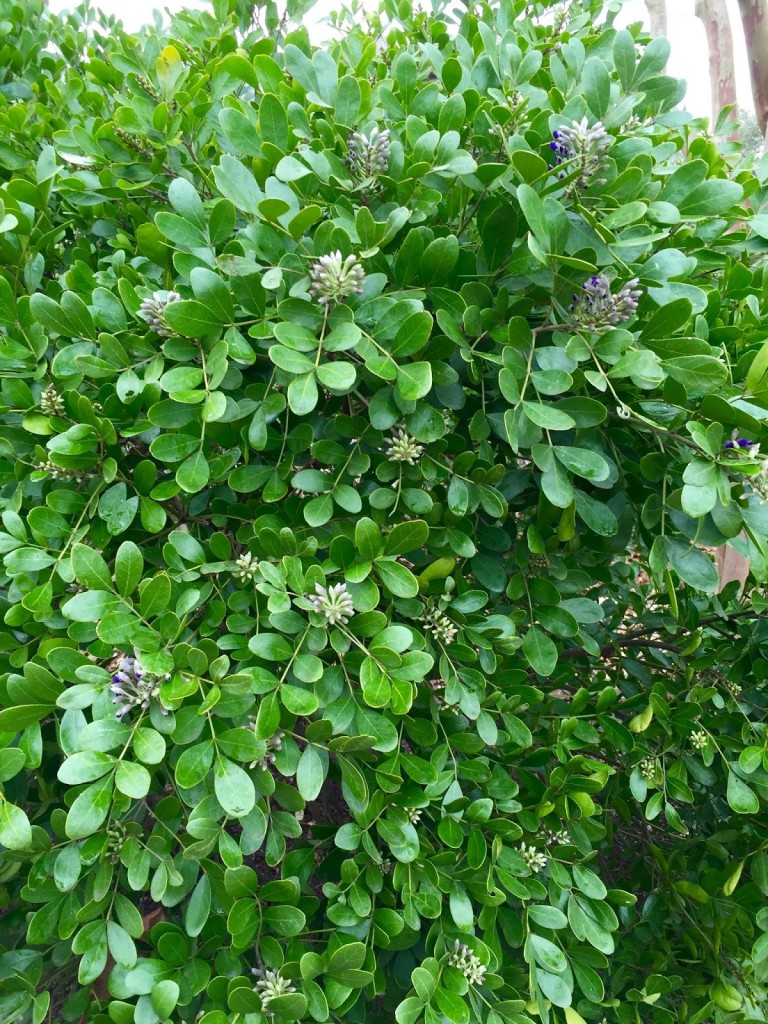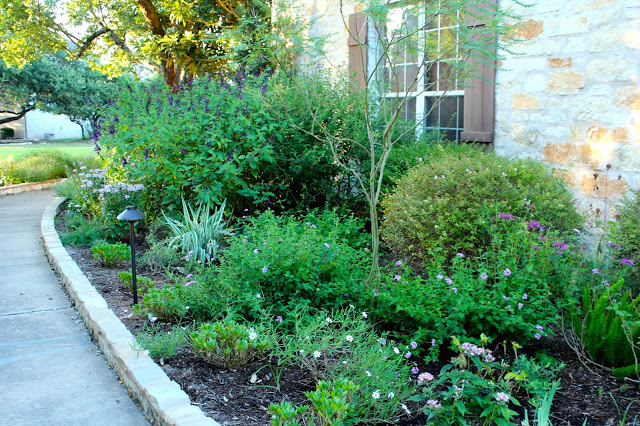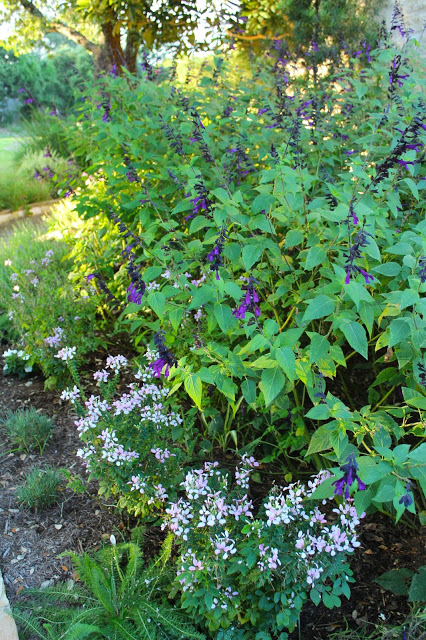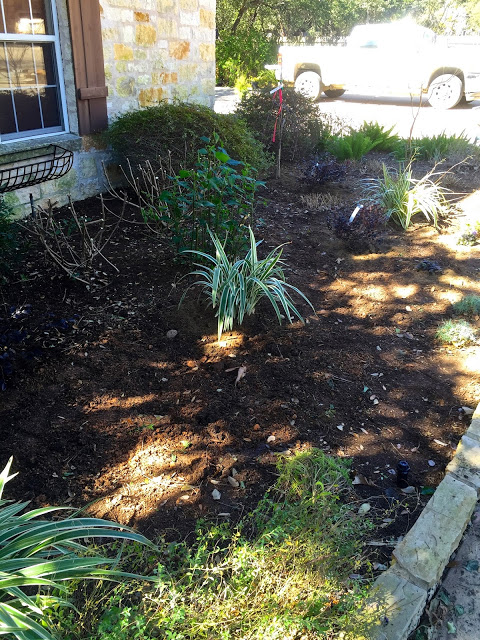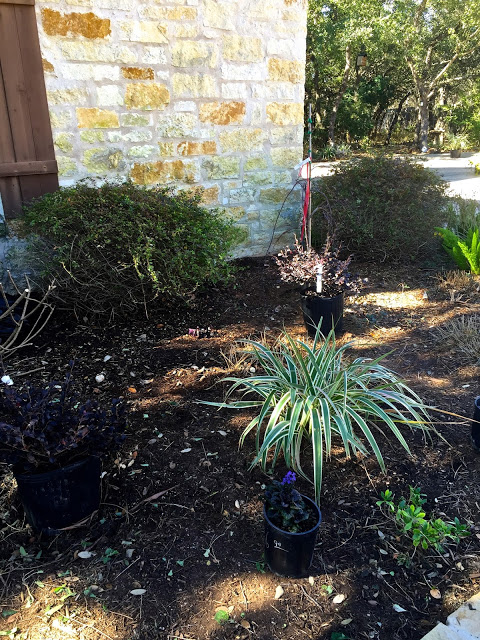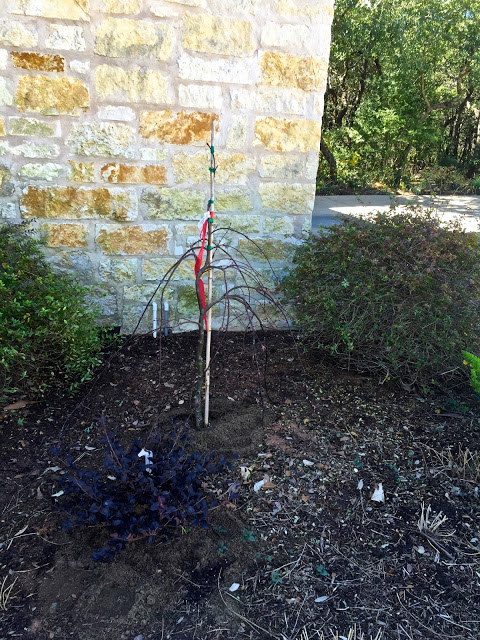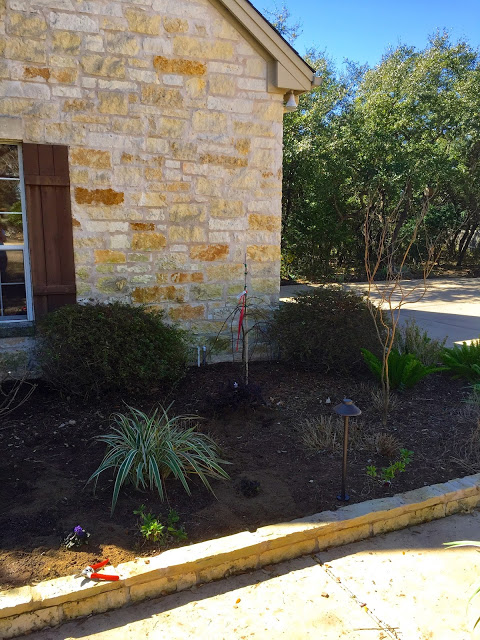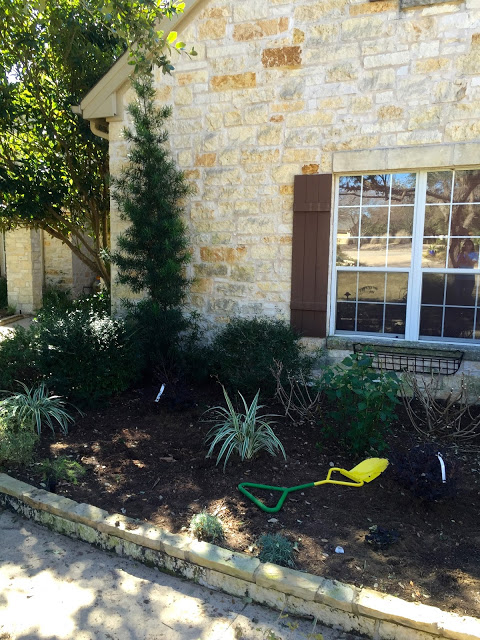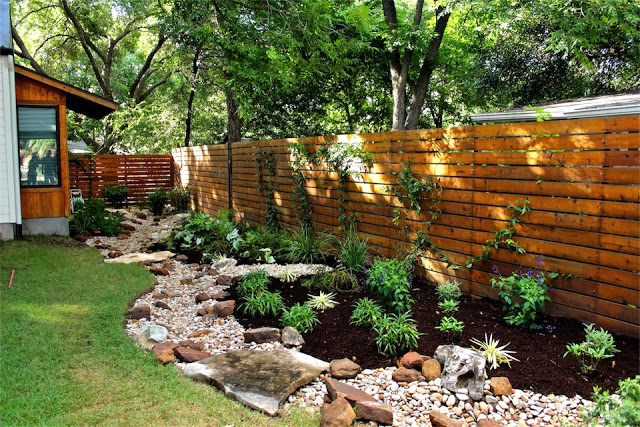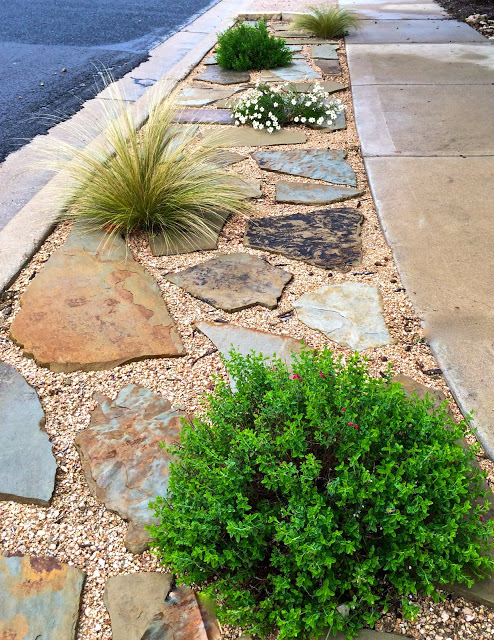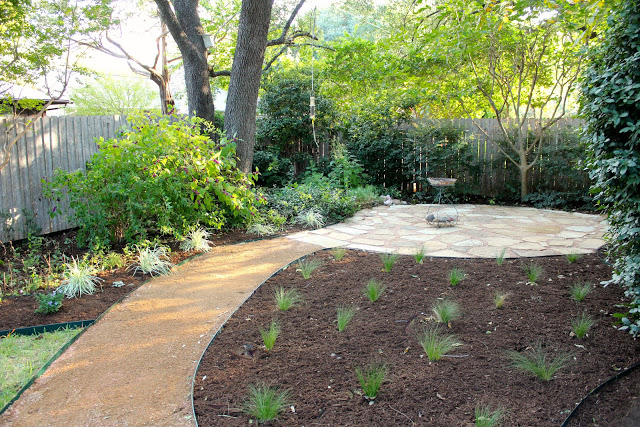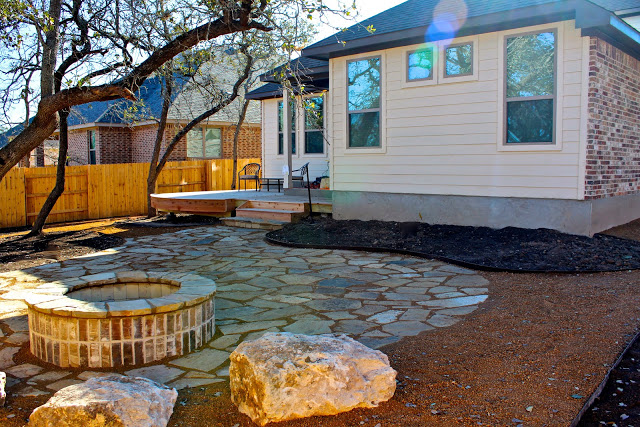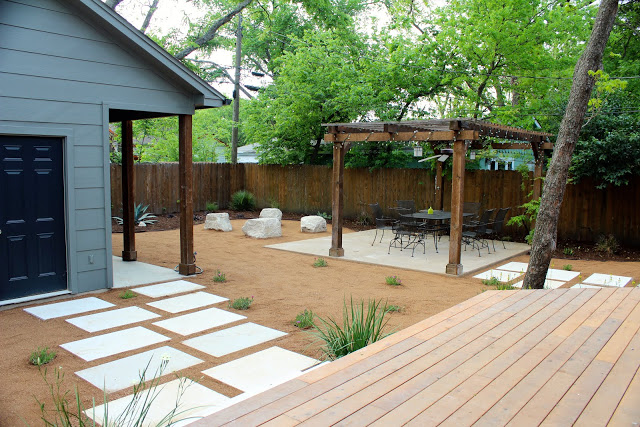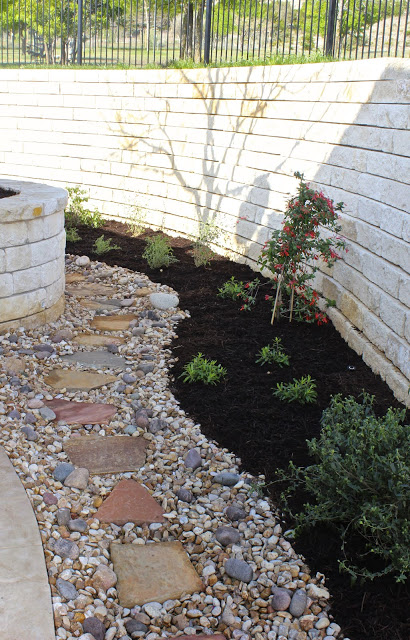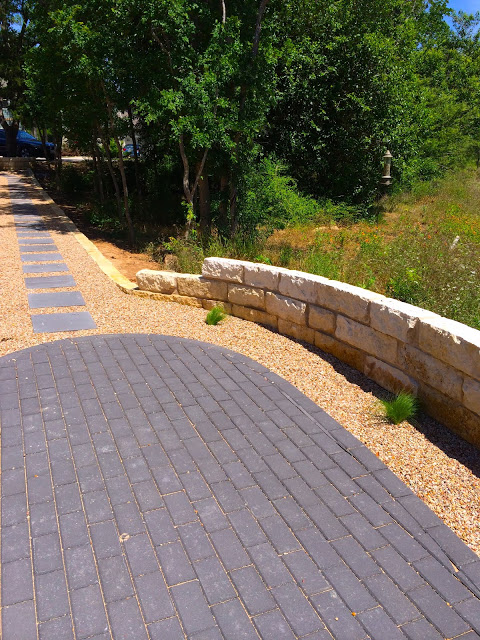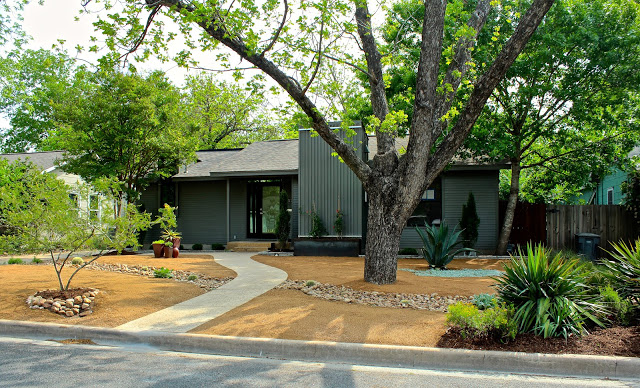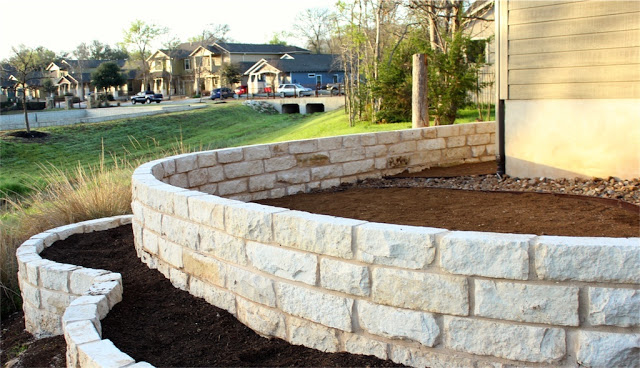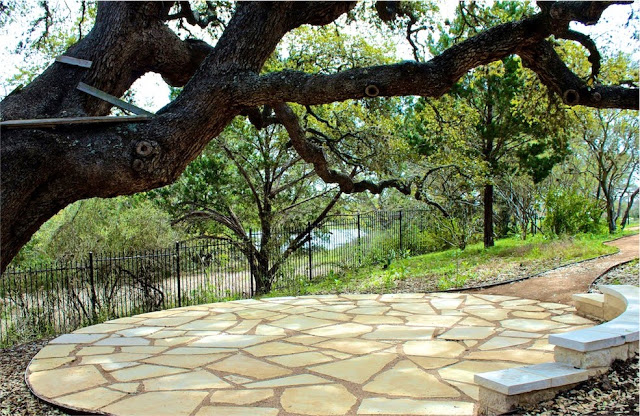Wildflower Center bursting with beautiful spring blooms…
For spring break this year we’ve decided to have a ‘staycation’ and do a little sightseeing right here in and around Austin. Today’s tour took us to the Lady Bird Johnson Wildflower Center, one of my favorite Austin garden destinations. Kallie couldn’t remember any of our many visits there — she was quite a bit younger the last time we were there. And Jeff said he’d never been.
Our timing was good — owlettes are nesting at the entrance right now. The owls nest there every year, and sometimes you’re lucky enough to get a glimpse of them.
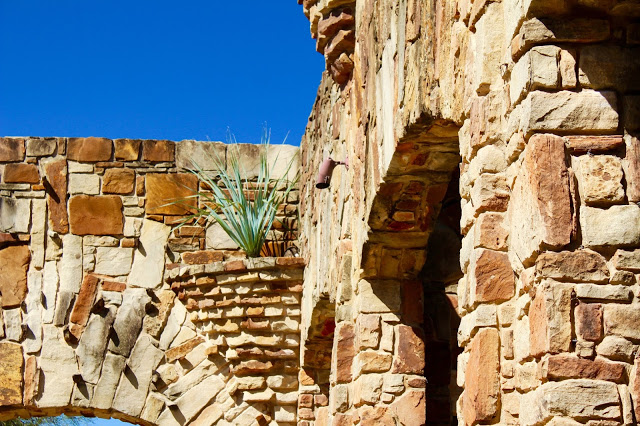
I didn’t capture it with my camera, but I did see one owl up there in the corner.
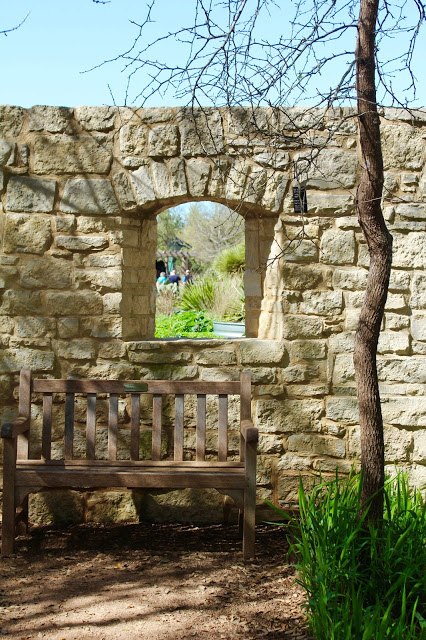
Some sight lines in the garden are wide open, and some are peek-a-boo cute.
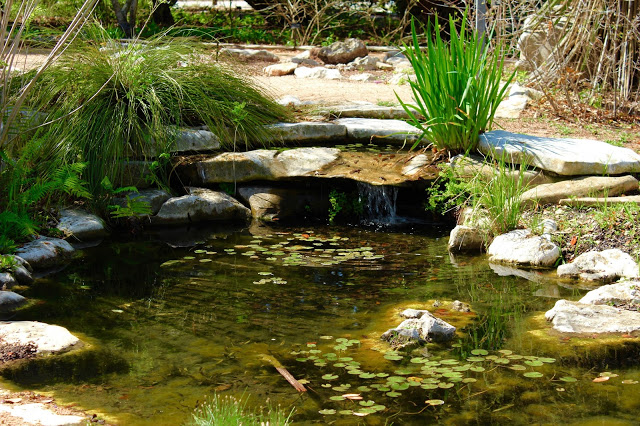
The plants at the Center are drought tolerant natives, but several water features help add depth and a cooling element to the gardens.
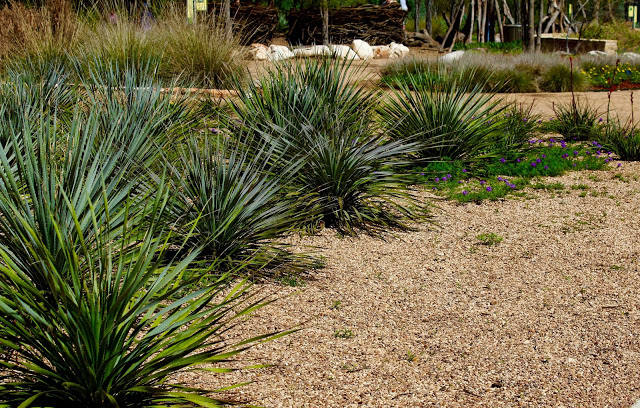
I love how they designed an oversized arc with these yuccas in the granite.
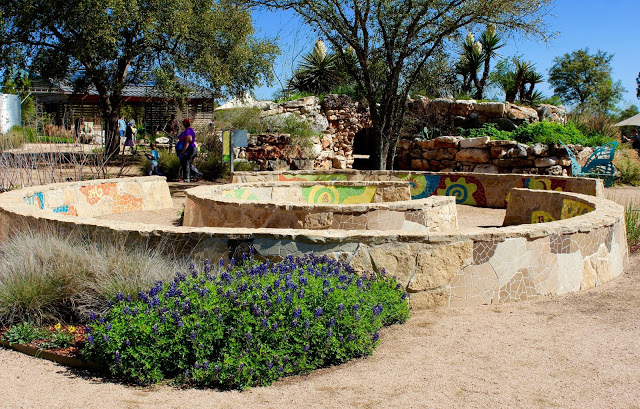
The family garden offers a plethora of areas just waiting for hands-on adventures like this mosaic wall — a maze and seating/balancing bean all in one!
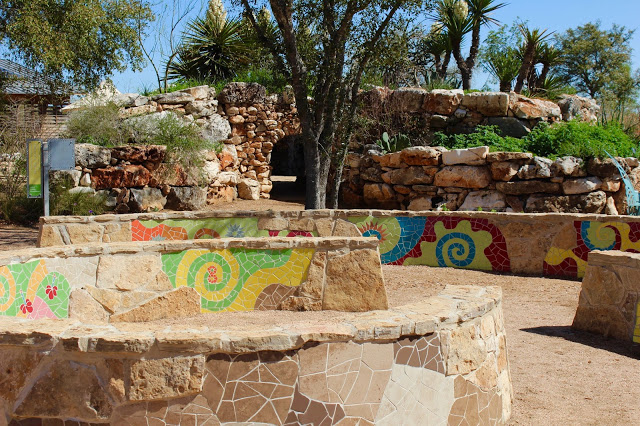
The mosaic tile artwork intermingled with the natural limestone rock reminds me of the work of Antoni Gaudi, whose amazing structures we saw in Spain several years ago.
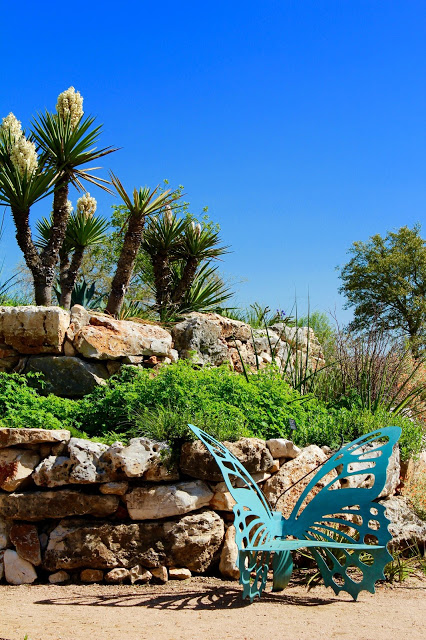
It’s not really hilly at the Wildflower Center, but these beautiful rocks simulate a cliffside, teaming with more yuccas.
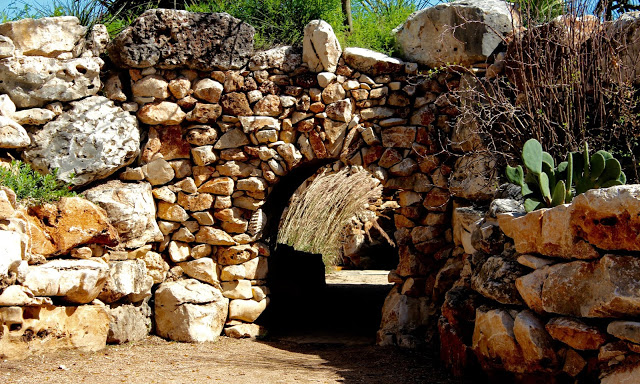
And what would a children’s garden be without ample hide and seek nooks and crannies?
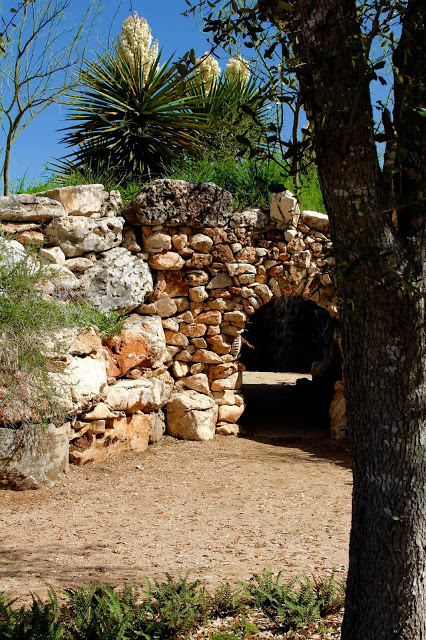
I wonder what’s through that arch?
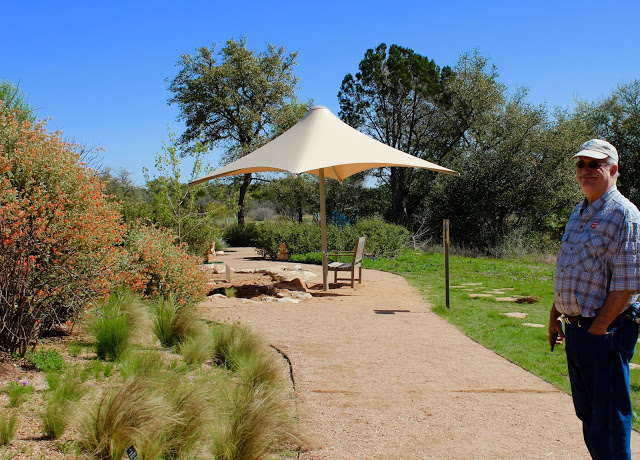
This scorching-hot swath of orange is brought to you by globe mallows. Their hot orange color lights up this bed, tempered only by the soft grey-green of their foliage.
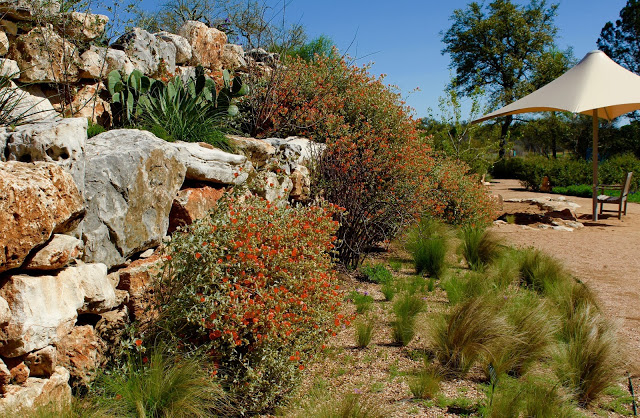
Mexican feather grasses and cacti join the party.
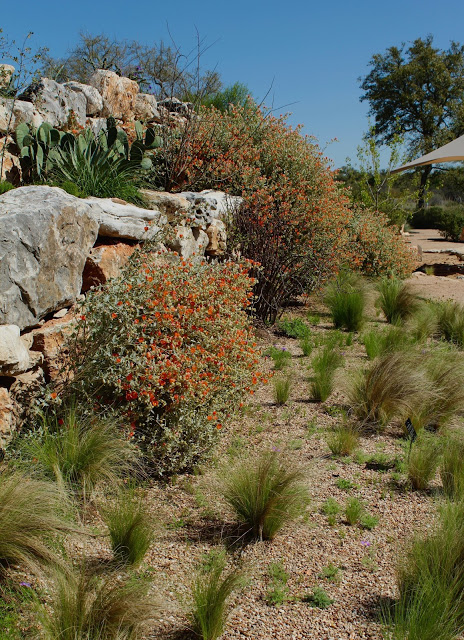
Notice how the peach and terra cotta colors in the stones echo the plant blooms?
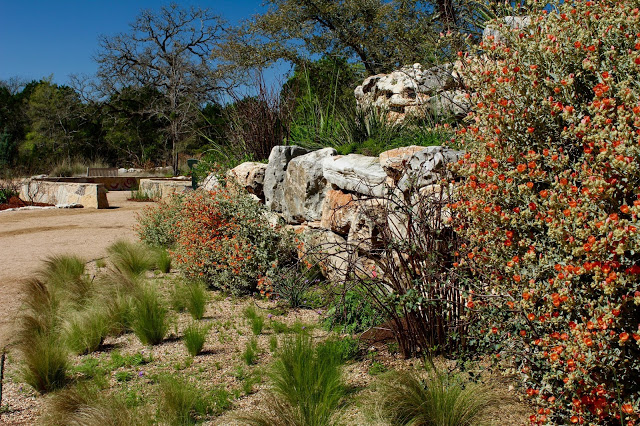
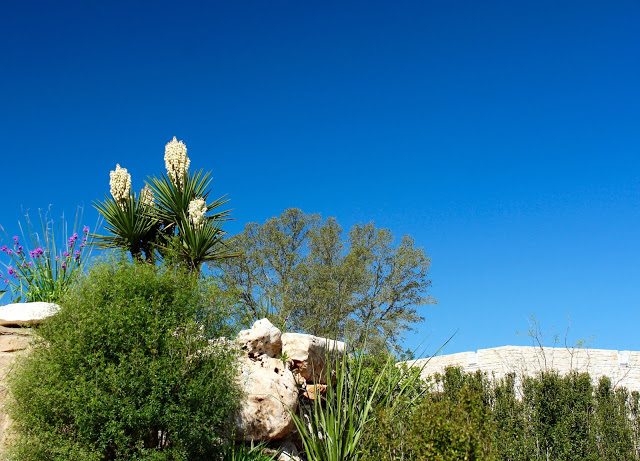
Another view of the top of the rock ridge with yuccas.
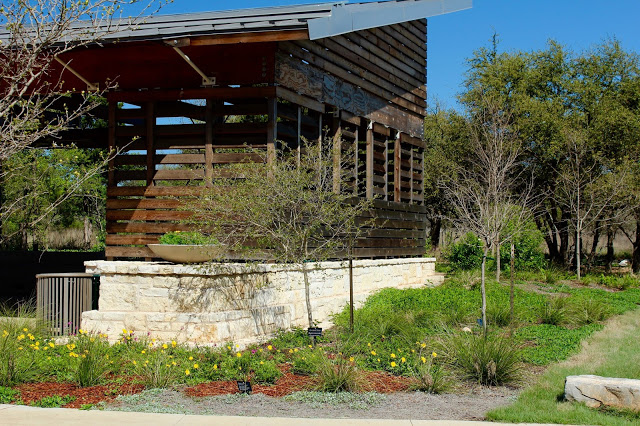
This is the event pavilion in the children’s garden.
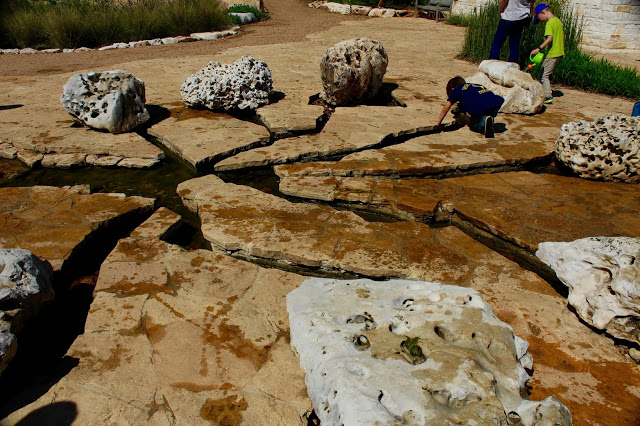 Water ripples between and under these massive rocks, inviting hands-on play.
Water ripples between and under these massive rocks, inviting hands-on play.
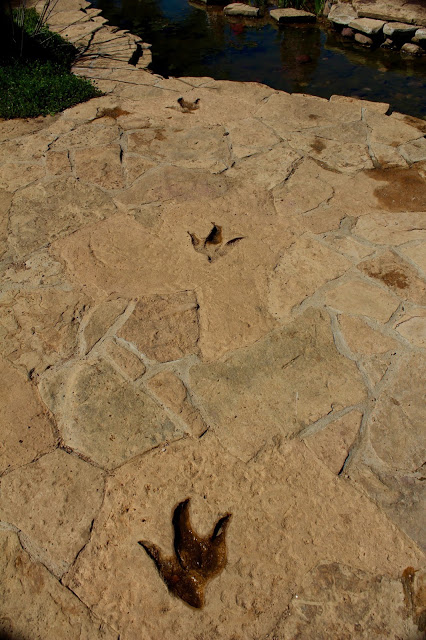
Who wouldn’t be enticed to follow these mysterious dinosaur tracks?

The tunnel leads under the waterfall where a window lets you peer out through the streaming water.
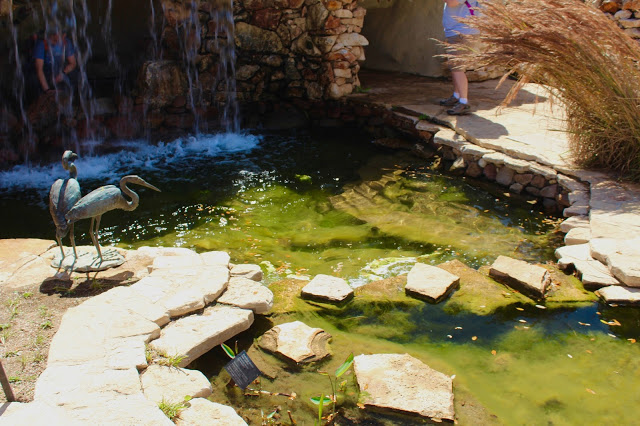
Are the cranes about to step gingerly onto the rock path?
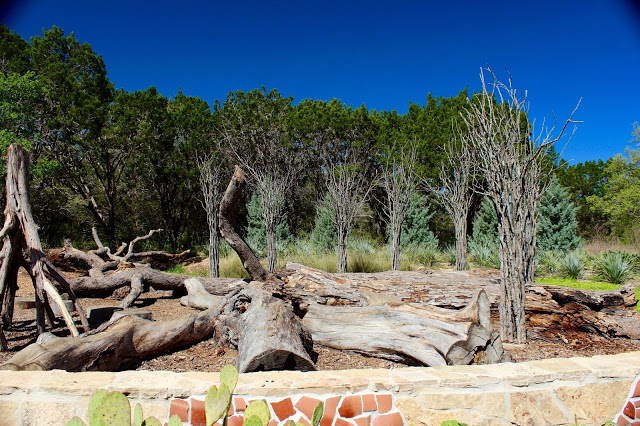
The family garden is also filled with wonderful places to climb and hide.
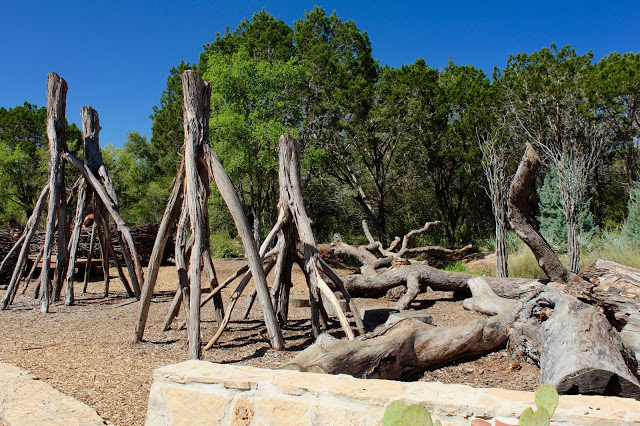
More of Mother Nature’s sculptures.
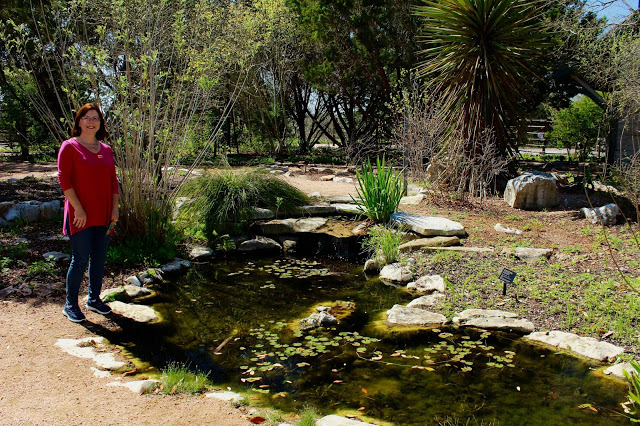
Another water feature provides the bubbling background music for the chirping birds.
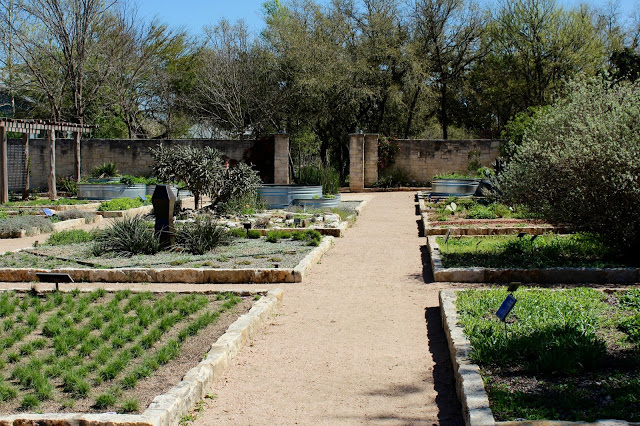
There’s something to learn in each segment of the demonstration garden.
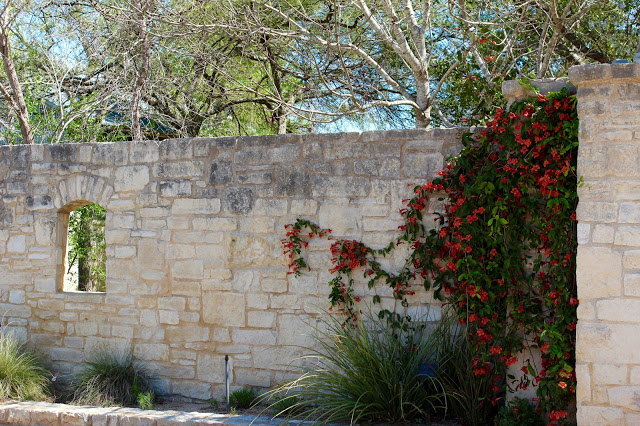
The tangerine crossvine creates a stunning pop of color on this limestone wall.
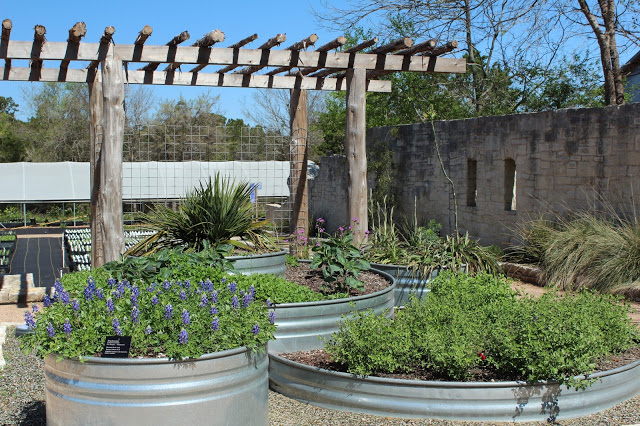
More demonstration garden displays.
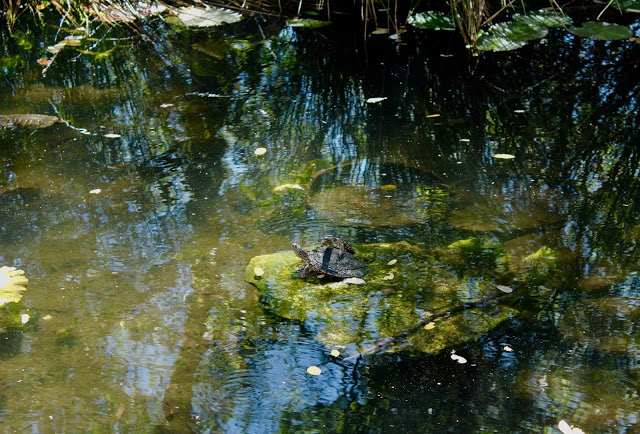
I always enjoy seeing the turtles sunning themselves at the entrance pond. It’s the perfect spot to get a tan!
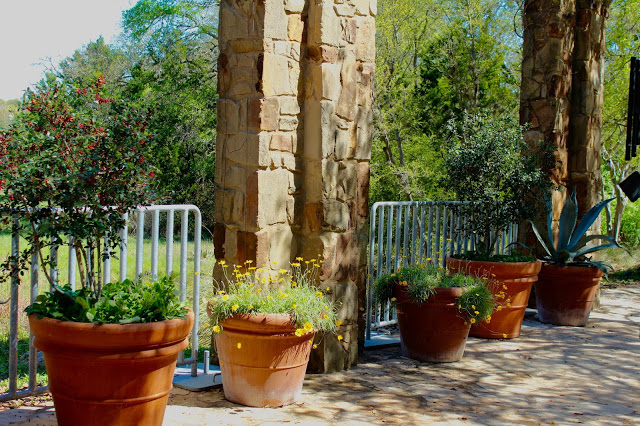
Terra cotta pots line the entry walkway, and seem to say, “y’all come back now, ya hear” as you walk out. We sure will!

